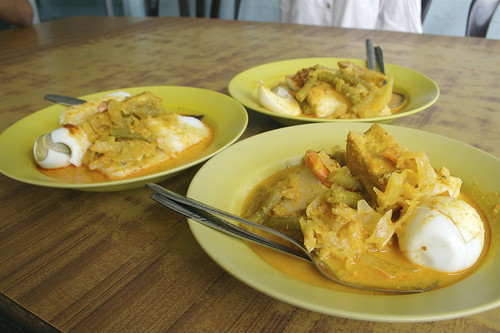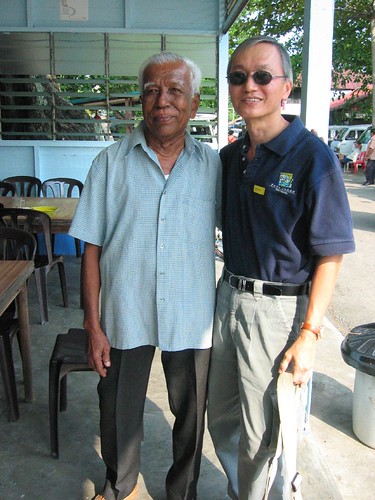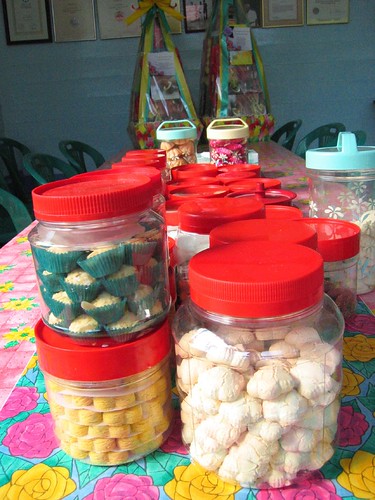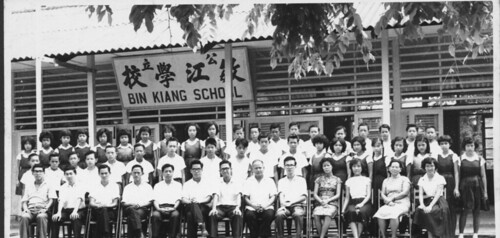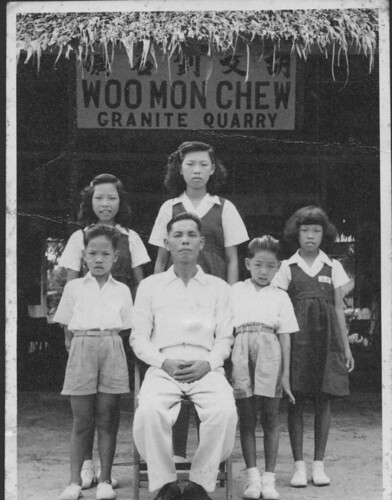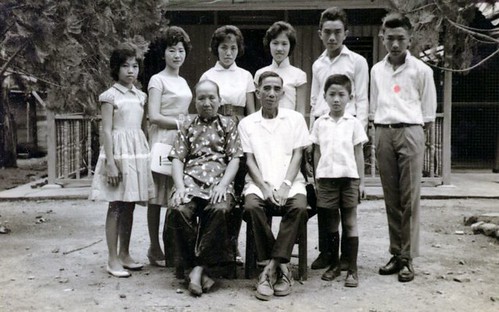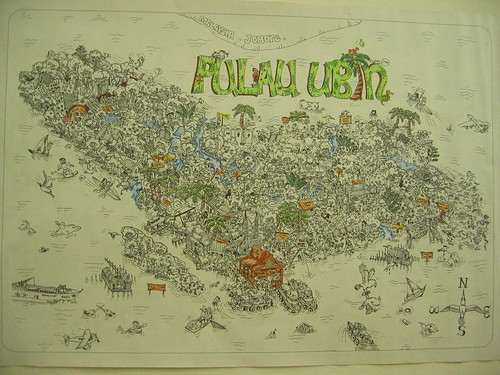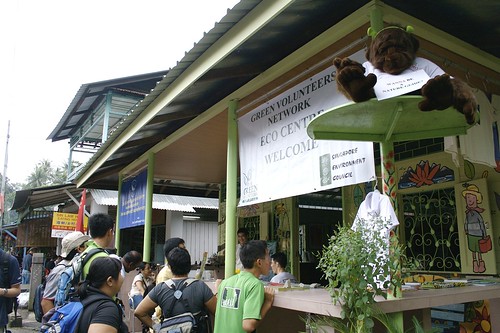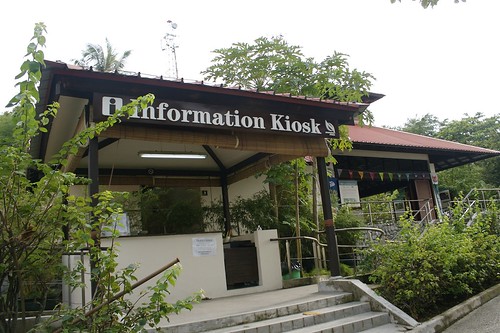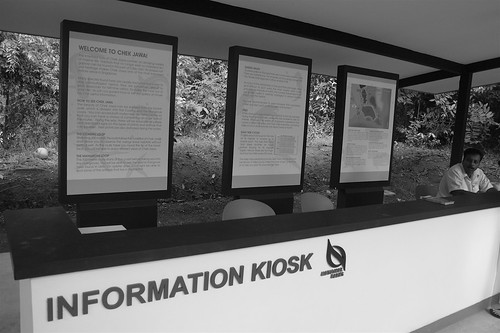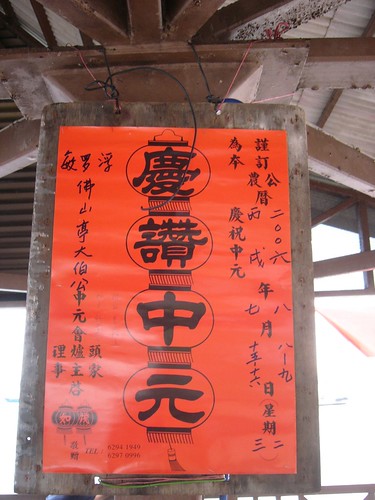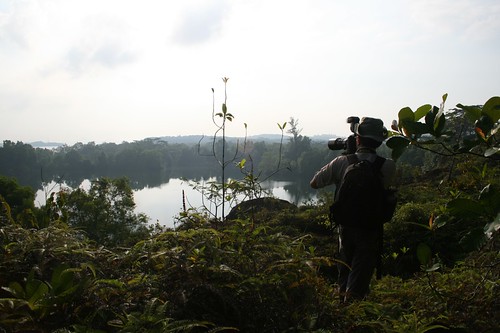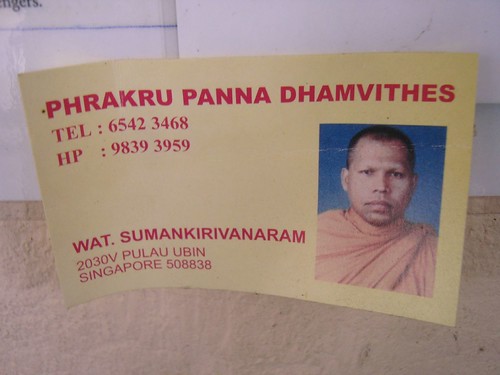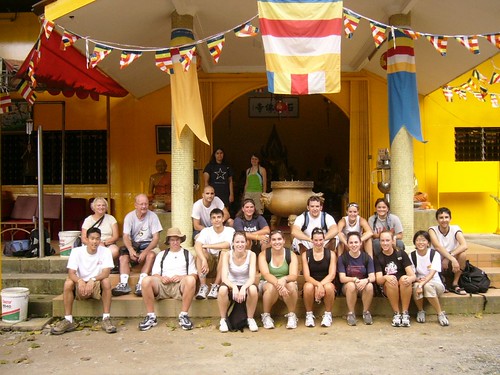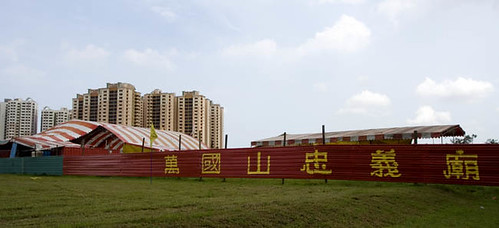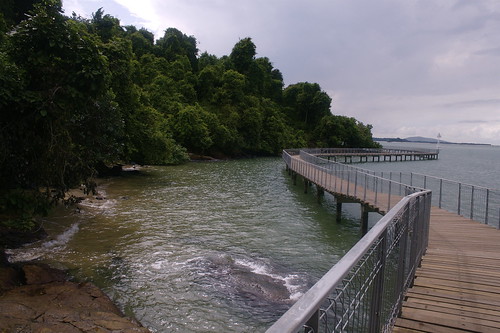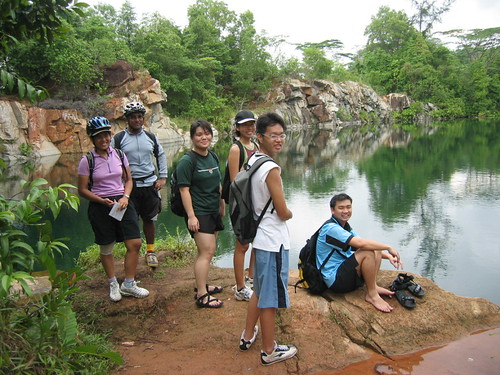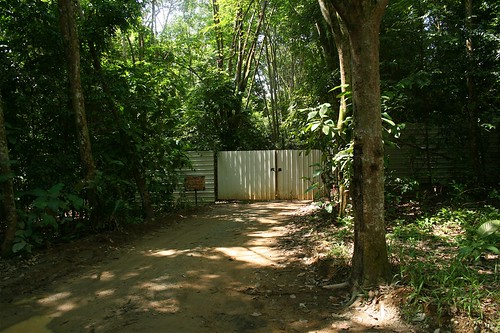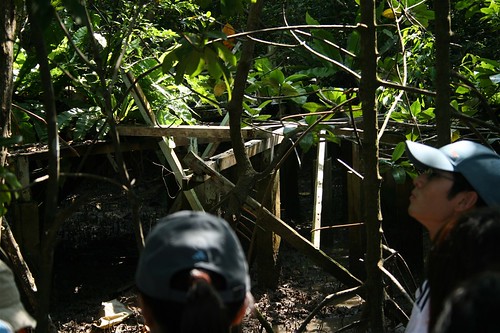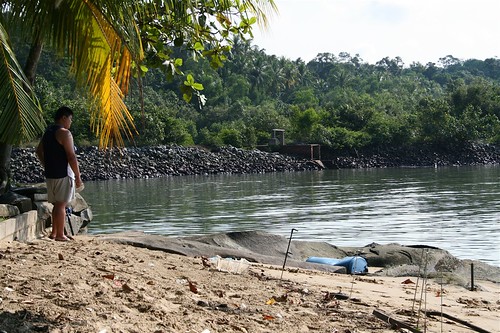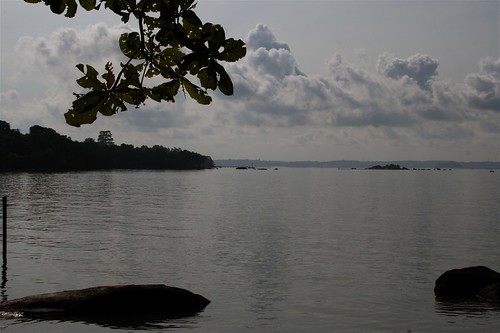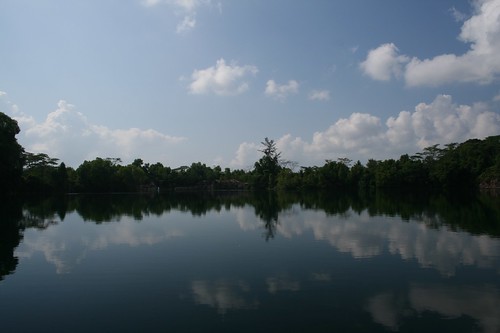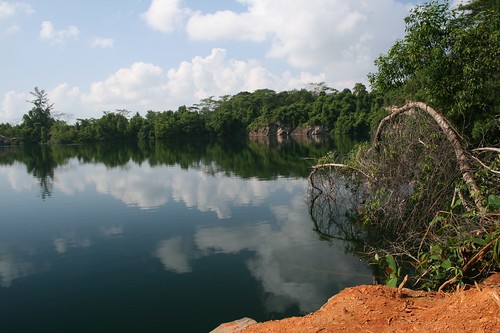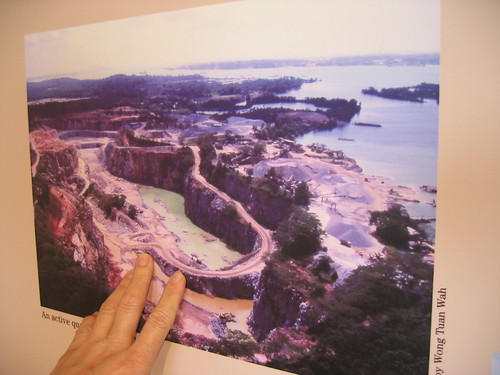15 April 2007
Straits Times
By Tan Dawn Wei & Jocelyn Lee
Loud explosions, flying rocks are set to return to Ubin with plans to mine granite there again. But will this add or subtract to life on the island?
LONGTIME Pulau Ubin resident Goh Lam Heng, 54, never used to need a watch.
'Every time I heard a blast, I knew that it was either 11am or 5pm,' said the owner of Sin Lam Huat Eating House and former quarry worker.
Like Mr Goh, many of the 60 or so residents still left on the island have either worked in the granite quarries or remember the loud daily explosions and flying rocks.
Now that the Government is re-opening one of the five disused quarries on the island for limited granite mining, Mr Goh and many fellow islanders are bringing out the Tiger beer.
'It'll be like old times again,' he said.
Mr Chin Tiang Hock, 75, who worked at two of the island's quarries for 38 years, suffers from breathlessness as a result of his long-term exposure to dust.
Nevertheless, he welcomes the re-opening of the quarries.
'People will come here again and this place will become lively once more,' he said.
Granite quarrying was once Pulau Ubin's lifeline. At its peak in the 1970s, there were eight quarries and more than 3,000 people living on the island.
That number has plummeted since then, especially after the last quarry was shut down in 1999.
Minister of State for National Development Grace Fu said in Parliament last Monday that the ministry plans to carry out limited quarrying at Pulau Ubin's Kekek Quarry to test the feasibility of jumpstarting Singapore's granite mining industry.
The plan has been drawn up in response to the disruption of granite supplies from Indonesia over the past few weeks, since the Indonesian navy detained a number of Singapore-bound granite barges suspected of carrying illegal sand shipments.
Mining operators will be invited to tender for the job in the coming months, the Building and Construction Authority said.
The good news for the industry is there is still plenty of granite on Pulau Ubin, said Mr Derrick Chee, managing director of Aik Hwa Group, the last company to pull out of the island in 1999.
The bad news is that the investment required to resume quarrying will be hefty.
Setting up a plant will cost in excess of $5 million because of the expensive equipment involved, said Mr Chee, whose father started the Ubin quarrying business in 1960 when he bought the 999-year lease on the site.
They will need drilling and crushing machines, excavators, lorries, barges, a jetty, magazines to store explosives and water pumps to drain the quarry pool.
Granite quarrying used to be a hazardous affair for its workers. Many suffered from silicosis, a respiratory disease caused by regularly inhaling silica dust over a long period of time.
Some even suffered hearing loss from the explosions.
The Government asked quarry owners to step up dust control measures in the 1970s. Workers were given earplugs, masks and goggles and required to go for X-ray examinations once a year.
Flying rocks were another problem. Workers had to take shelter from the blasts in steel cages more than 500m away.
'Whenever there was a larger explosion which blew up larger pieces of rock, we would ride our motorcycles and flee the area,' recalled retiree Ong Tin Huat, 53, who worked at various Ubin quarries from the age of 16 to 45.
He is hoping to be re-hired as a tractor driver when the quarry re-opens.
While residents like Mr Ong are happy, others are afraid all the activity will frighten off visitors.
Mr Vincent Chew, 39, owner of Chew Teck Seng provision shop, said: 'It can bring more business for me as more people come here to work. But tourists may not want to come here any more as they may be scared of the flying rocks and loud explosions.'
But with more efficient drilling machines and blasting techniques, there should be little to worry about, industry players said.
That is scant comfort for environmentalists, who believe the quarrying will have a negative impact on the island's biodiversity.
Dr Vilma D'Rozario, chairman of the education group of the Nature Society, visited Kekek Quarry last Saturday and saw many animals in the area, including in the quarry pool.
'Can we look at alternative materials instead of getting it raw from the quarry? Then we can save a wild habitat, which we already don't have much of,' she said.
But the National Parks Board has assessed Kekek Quarry's surroundings - documented 57 bird species and 153 plant species, most of which are common on Ubin - and given the green light.
Mr Chee does not think that the environmental impact will be too significant as long as mining operators are allowed to dig deeper rather than widen the quarries.
'If you go down to 100m below sea level, you will be excavating a lot of granite,' he said.
Currently, there is a limit on mining, up to a depth of 50m below sea level.
Mr Vincent Tan, 47, a parent volunteer for Tanjong Katong Secondary School who accompanies student groups to the island regularly for project work, said it will be a good opportunity for students to learn about mining.
'They will also get the chance to see for themselves what granite quarrying is all about,' he said.
